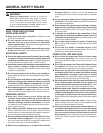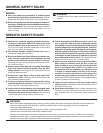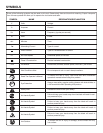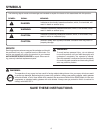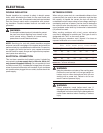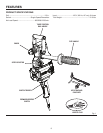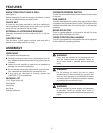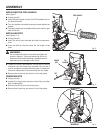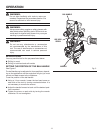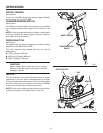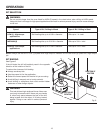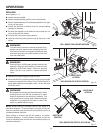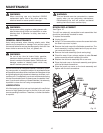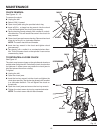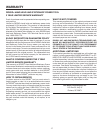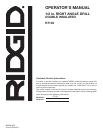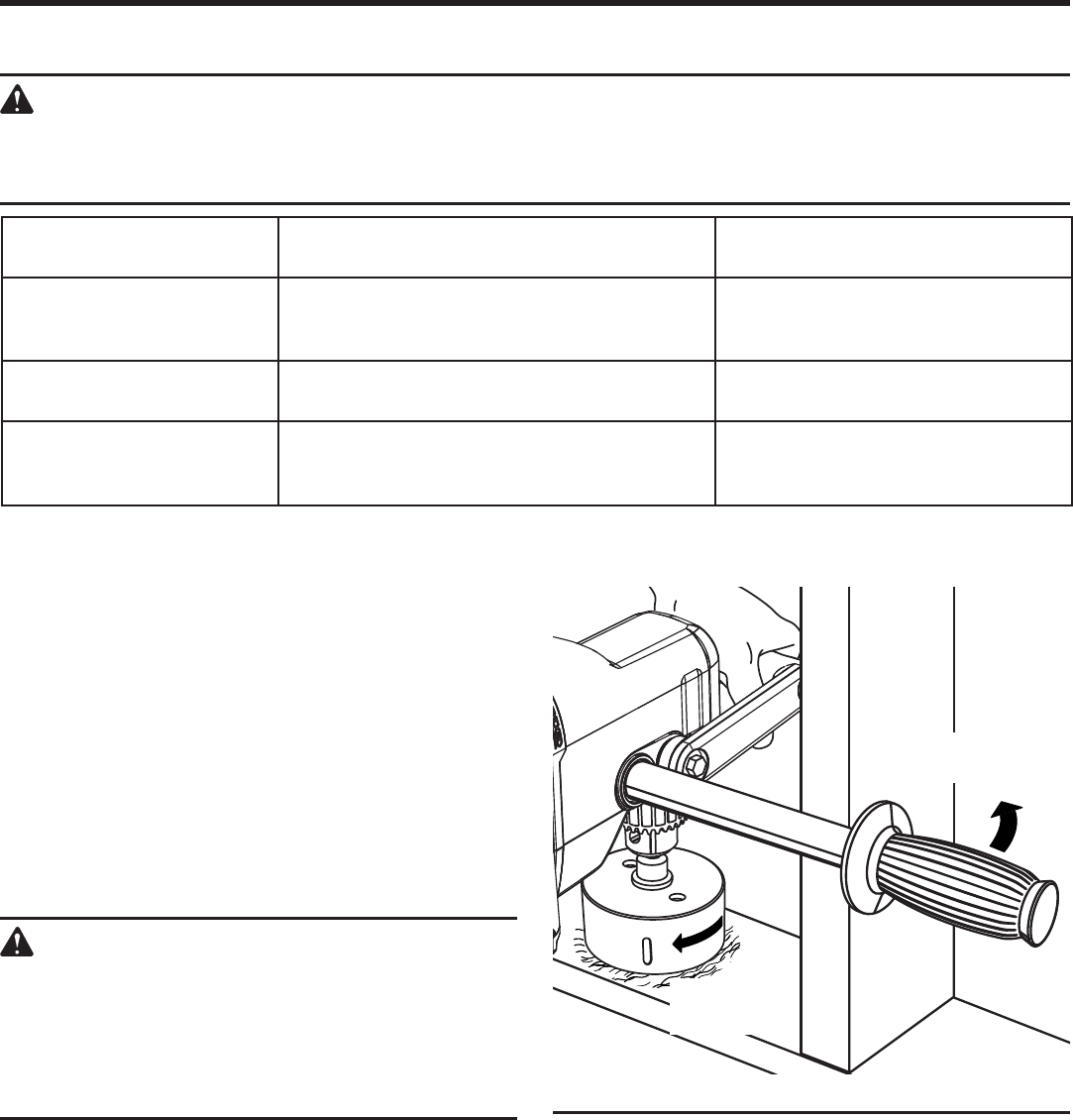
12
13
BIT SELECTION
WARNING:
Do not use bits larger than the ones listed for HIGH (3) speed in the chart below when drilling at HIGH speed.
Using a bit that is too large for high speed applications can result in serious personal injury and can cause damage
to the tool.
OPERATION
BIT BINDING
See Figure 8.
If the bit binds, the drill will suddenly react in the opposite
direction of the rotation of the bit.
To reduce the chances of bit binding:
n Always use sharp bits.
n Use the proper bit for the application.
n Select the correct speed for the size bit you are using.
n Avoid drilling in warped, wet or knotty material.
n Avoid drilling in workpieces that could contain hidden
fasteners or other foreign objects.
WARNING
This tool delivers high rotational forces. Never use
your body to brace the drill. Never put your hands
or other body parts between the part of the drill
being braced and the object it is being braced
against. Doing so can result in serious personal
injury.
DIRECTION OF
REACTION
DIRECTION OF
ROTATION
Fig. 8
Speed Type of Bit / Drilling in Wood Type of Bit / Drilling in Steel
LOW (1) - High torque
applications
Self-feeding bits up to 4-5/8 in. diameter Bits up to 1 in. twist
MEDIUM (2)
Self-feeding bits up to 2-9/16 in. diameter Bits up to 3/4 in. twist
HIGH (3) - Low torque
applications
Self-feeding bits up to 1-3/8 in. diameter Bits up to 1/2 in. twist
NOTE: Always use the drill in LOW (1) speed when high torque is needed. Do not use HIGH (3) Speed for a high torque
job.



